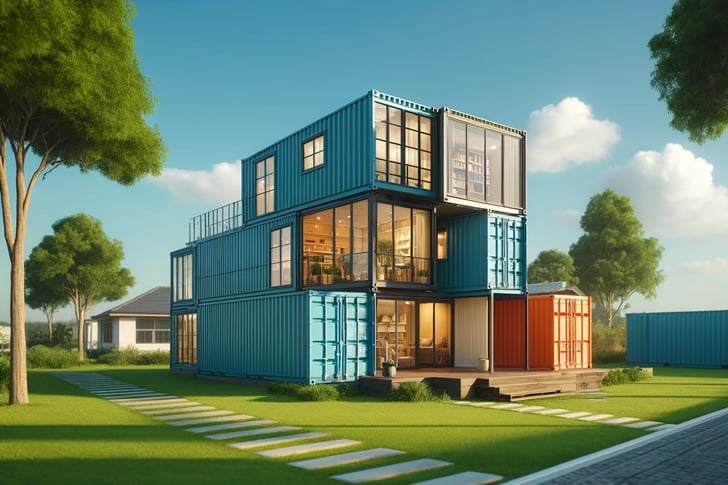Innovative Life: How to Build a Cheap Container House
Container houses are transforming affordable living, offering a unique blend of sustainability and modern design.

Introduction
The concept of container homes has gained significant traction as a cost-effective and innovative housing solution. Utilizing shipping containers as the structural framework, these homes not only recycle materials but also offer flexibility in design and quick construction times. This article delves into various aspects of container homes, including prefabricated and expandable options, current trends, and cost-effective building strategies.
Understanding Container Homes
Shipping Container Homes
Shipping container homes are built from steel shipping containers that once transported goods on sea or land. Typically, these containers are 20 or 40 feet in length, providing a compact, structurally sound base for construction. Their popularity lies in their robustness, modularity, and relatively low cost compared to traditional building materials.
Prefabricated Container House
Prefabricated container homes are manufactured off-site and delivered ready to install. This method significantly reduces construction time, labor costs, and environmental impact. Prefab units can be customized in a factory setting, ensuring quality control and precision, and then transported to the site where they are assembled.
Expandable Container House
Expandable container houses are a subset of prefabricated homes that can be extended horizontally or vertically. They are designed to allow homeowners to start small and expand their space as needed. This flexibility makes them an appealing choice for young families or individuals on a tight budget.
2024 US Container House Trends
Looking forward to 2024, the trend in container housing is moving towards greater eco-friendliness and technological integration. Innovations such as solar panel roofing, rainwater harvesting systems, and smart home technology are becoming more common. Additionally, there is a growing emphasis on architectural diversity, with designs that push the aesthetic boundaries of what container homes can look like.
Container Homes For Seniors
Container homes are also a viable option for seniors, offering a compact, manageable living space that is both affordable and low maintenance. Features like single-level design can enhance accessibility, and customizations can be made to address mobility needs. The affordability of container homes also makes them attractive for those on fixed incomes.
June Discounts
June is becoming known as a favorable time to purchase container homes due to seasonal discounts offered by manufacturers and builders. These discounts can significantly reduce the initial investment cost, making June an optimal month for starting a container home project.
Build A House In A Shipping Container
Building a house in a shipping container involves several key steps:
- Design: Planning the layout and features of the home.
- Permitting: Securing necessary building permits and ensuring the design meets local building codes.
- Foundation: Preparing a site with a suitable foundation to support the containers.
- Modification: Cutting openings for doors, windows, and removing internal walls.
- Installation: Placing the containers on the foundation and securing them.
- Utilities: Installing plumbing, electrical, and HVAC systems.
- Insulation: Ensuring the container is well-insulated to make it comfortable for living.
- Interior Finishing: Adding interior walls, floors, and ceilings.
- Exterior Finishing: Finishing the outside of the container home to enhance aesthetics and durability.
Cost Examples Across the U.S.
Here are ten examples of the costs associated with building a basic one-container home in different U.S. districts, reflecting variations in labor, materials, and land:
- New York, NY: $40,000
- Los Angeles, CA: $35,000
- Chicago, IL: $30,000
- Houston, TX: $25,000
- Phoenix, AZ: $24,000
- Philadelphia, PA: $28,000
- San Antonio, TX: $22,000
- San Diego, CA: $33,000
- Dallas, TX: $26,000
- San Jose, CA: $38,000
These figures include the container, basic modifications for livability, and installation but exclude the cost of land.
Conclusion
Container homes present a unique opportunity for affordable, flexible, and sustainable living. Whether opting for a prefabricated, expandable, or completely custom build, these homes can be tailored to meet a wide range of needs and preferences. With strategic planning and execution, building a container home can be a rewarding project that not only saves money but also contributes to environmental conservation. As the trends continue to evolve, container homes are set to become an increasingly mainstream option for innovative and eco-conscious living.







Recent Comments